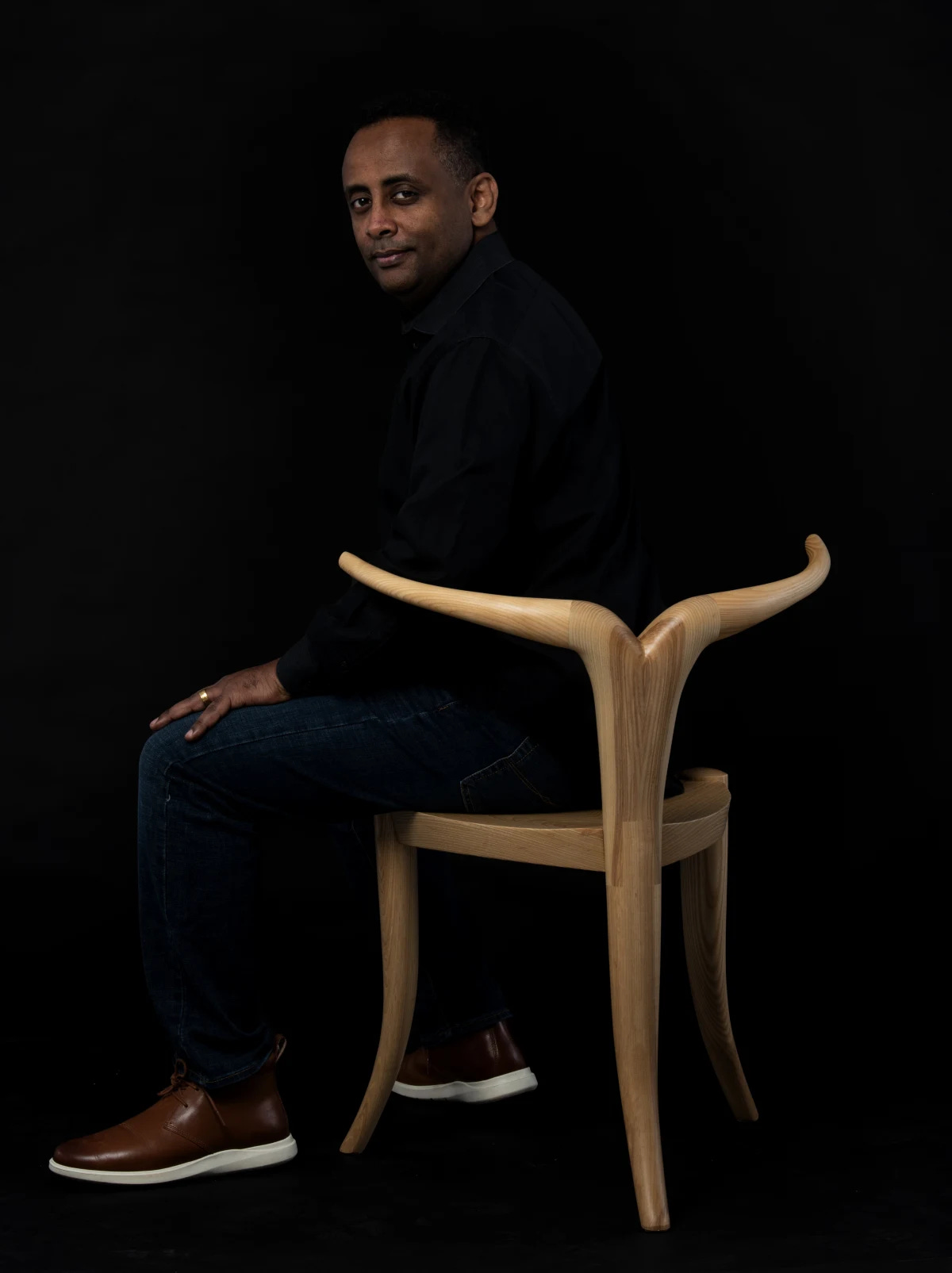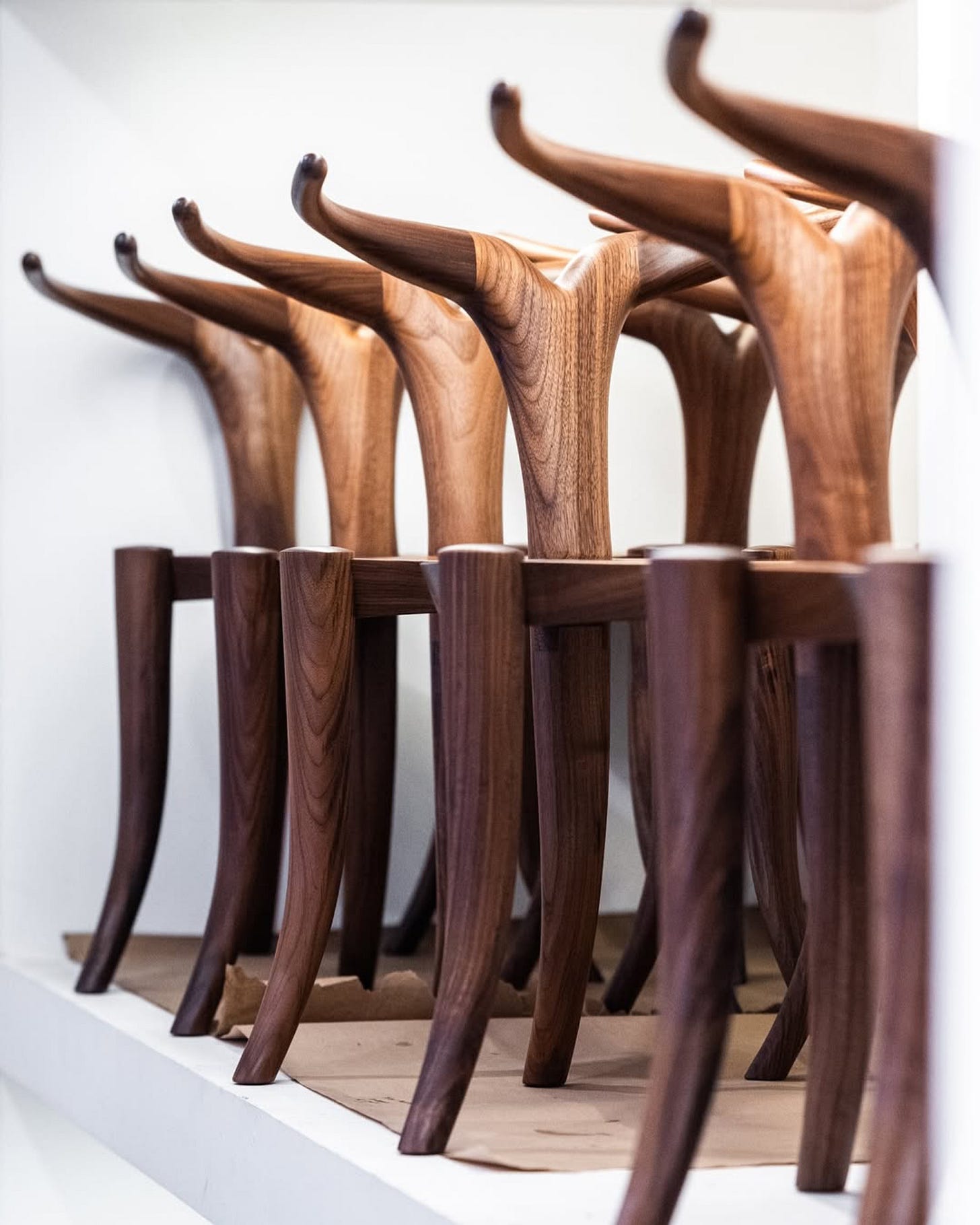Objects of Leisure: Jomo Tariku and the Reclaiming of African Form
The Designer Reclaiming African Furniture as Art
There are objects that simply serve, and then there are objects that speak.
They hold memory. They preserve identity. They blur the line between functionality and sculpture, between resting and remembering.
This is the beginning of Objects of Leisure - a new series from The Leisurely Life exploring collectible pieces that elevate leisure into legacy. These are not just beautiful things. They are thoughtful things. They invite you to slow down, to notice, to sit with soul.
And there’s no better place to begin than with the visionary designer Jomo Tariku.
The Designer as Cultural Archivist
Born in Kenya to Ethiopian parents, Tariku has become one of the most important voices in global furniture design and one of the few who unapologetically centers Africa as identity, not inspiration.
While the design world has often viewed African forms through an external, often extractive lens, Jomo Tariku’s work emerges from within. It speaks the language of ancestry without translation. His pieces do not borrow from Africa; they belong to it.
With a background in industrial design and a passion for cultural preservation, Tariku has created a body of work that is as intellectually rigorous as it is visually stunning. His furniture has been acquired by the Metropolitan Museum of Art, Los Angeles County Museum of Art (LACMA), and featured in Black Panther: Wakanda Forever - a cultural milestone in itself.
Yet what makes his work so compelling is not just where it’s been seen, but what it stands for: a future where African aesthetics are recognized as essential to the canon of global design.
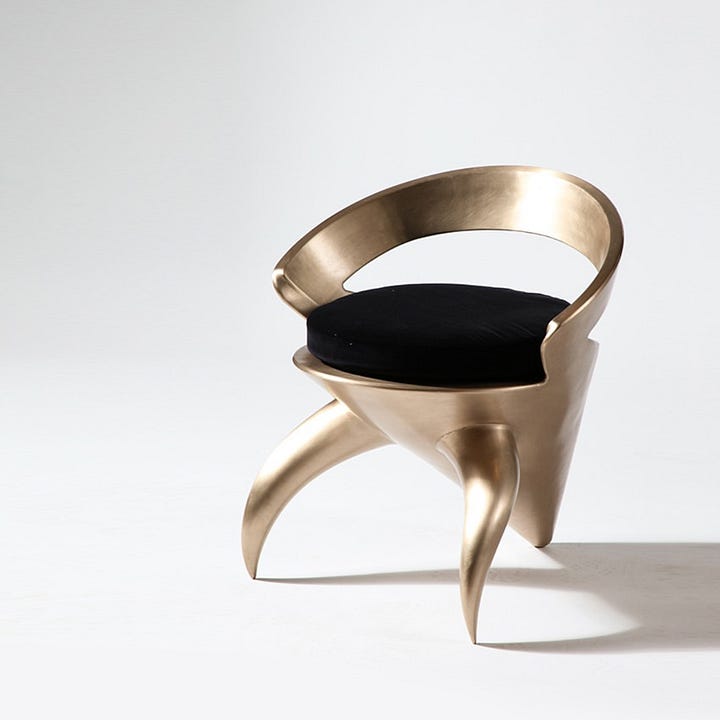
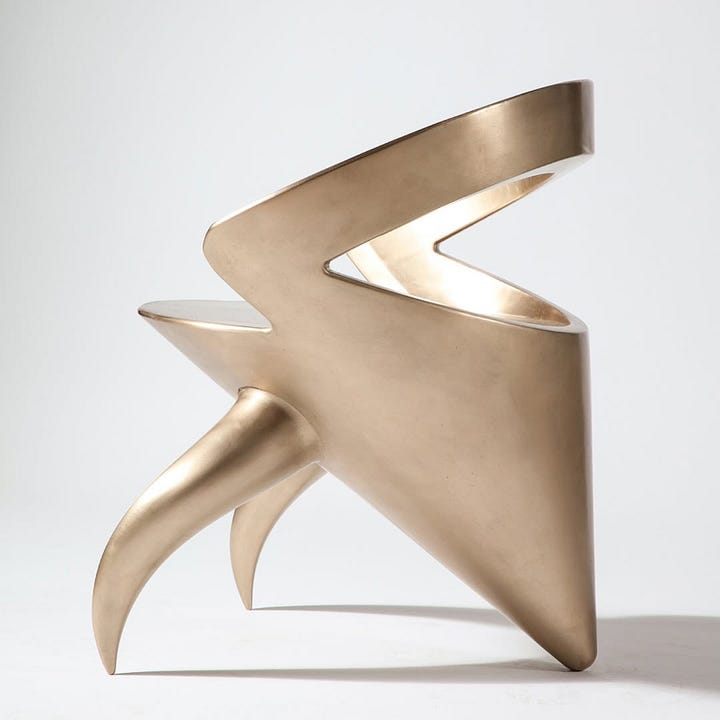
The Pieces: Where Form Meets Story
In this first feature, we spotlight four of Jomo Tariku’s most striking creations, each one a sculptural reflection of Africa’s diverse artistic languages.
Kundung Pembe Chair
Rooted in the masquerade traditions of Nigeria’s Tarok people, this chair moves differently. Its angularity, dual-horned back, and geometric precision reference both ritual masks and sacred ceremonies.
But what’s striking is how minimalist and restrained it is. The Kundung Pembe is at once performative and quiet. It carries the energy of movement without ever needing to move. It feels ceremonial, as if it’s waiting for the right moment, the right room, the right story.
It’s a chair that doesn’t just seat; it guards, it remembers, it bears witness.
Nyala Chair
With its elegantly arched backrest, the Nyala Chair pays homage to the Ethiopian mountain antelope of the same name. The horns of the nyala become a structural motif that is bold, curved, and dignified.
There’s a regal stillness to this chair. It doesn’t beg for attention, yet it holds space with authority. It feels ancestral, like something that belongs in both a palace and a museum. Crafted from bent wood and assembled with precision, the Nyala Chair is as much an object of reverence as it is a functional seat.
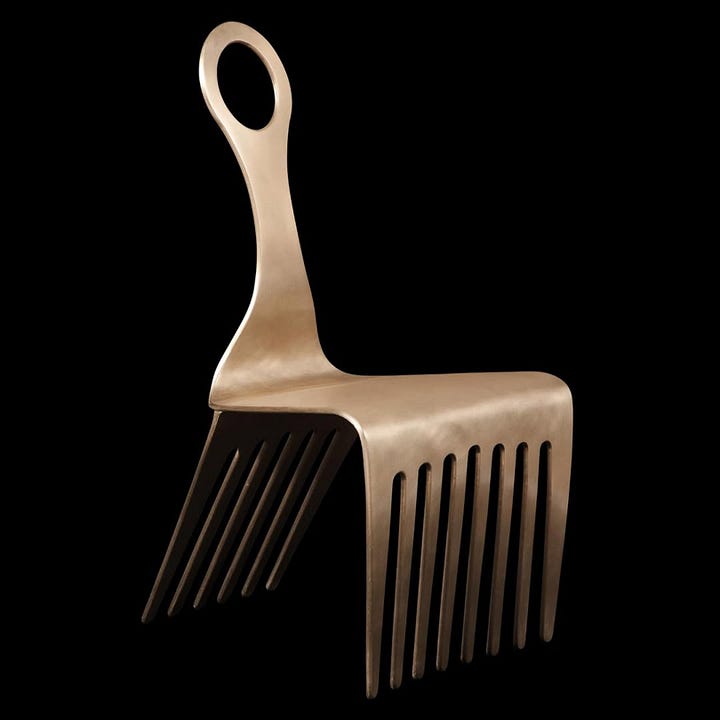
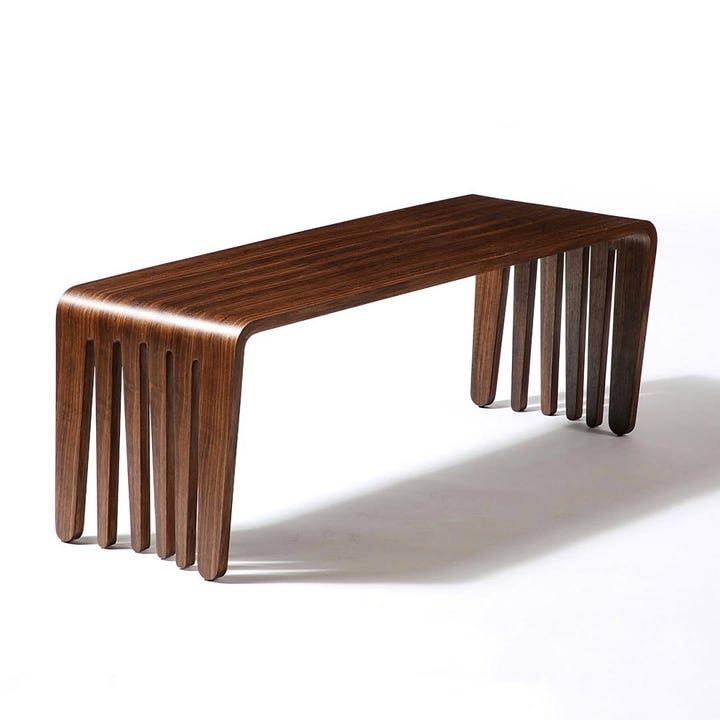
Meedo Chair & Meedo Bench
Inspired by the elaborate hairstyles of the Mangbetu women of Central Africa, the Meedo pieces are tributes to embodied culture, where the human body becomes art, and art becomes design.
The circular forms mimic the looped coiffures that once signified status, beauty, and creativity. There’s something deeply architectural about them. They feel mathematically satisfying, yet intimate with a quiet celebration of African womanhood, form, and legacy.
By immortalizing a cultural hair practice in wood, Tariku offers a commentary on how design can preserve what history often erases.
The Power of Designed Memory
Across all four pieces, Jomo Tariku demonstrates something rare: the ability to use furniture as cultural language.
These chairs are not driven by trends or Western minimalism; they are grounded in spiritual, ethnic, and emotional memory. They invite questions: Who made this? What inspired it? What part of the continent does it whisper from?
Each curve and joinery decision carries intentionality. Each object becomes a quiet but profound protest against erasure by asserting that African design deserves its place not just in homes, but in history.
And this is why they belong in Objects of Leisure.
Because leisure is not always about escape. Sometimes, it is about return to memory, to culture, to self.
Onward
This is the first of many.
Each edition of Objects of Leisure will offer a deep look at a singular piece, series, or designer whose work elevates how we live, reflect, and collect. The goal is not to consume more, but to appreciate better. To develop taste that is rooted in meaning, not just aesthetics.
Jomo Tariku’s work reminds us that what we choose to surround ourselves with is not neutral. It’s spiritual. It's political. It’s personal.
And sometimes, it’s powerful enough to make us sit down and listen.
Thank you for reading.
If this moved you, share it with someone who believes beauty and identity can coexist. And if you know a designer, collector, or piece we should feature next, I’d love to hear from you.
#ObjectsOfLeisure
#TheLeisurelyLife
#AfricanDesign



